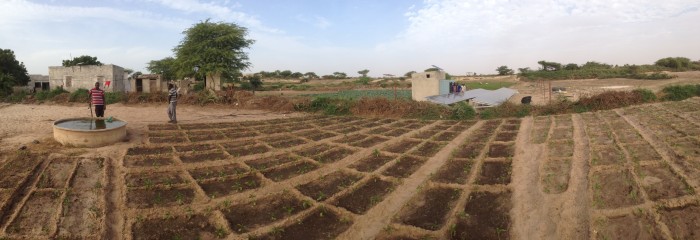Solar powered Agricultural water pumping system is up and running in Senegal!

The Sustainable Engineering Lab has installed the first of three batteryless solar-powered irrigation pilot systems in Senegal. Each system provides clean energy to power water pumps for 7 horticulture farmers in rural Senegal as part of USAID’s Powering Agriculture grant.
Transport of the AC pump controller to the site:
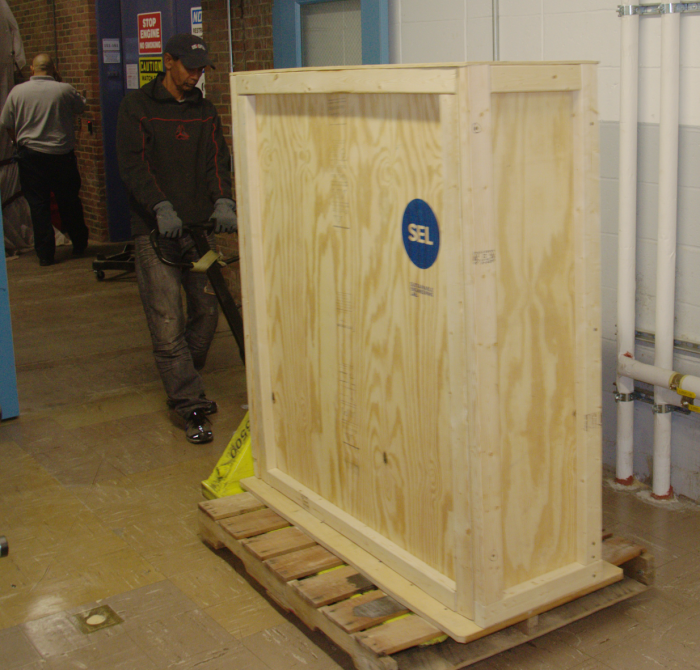 The central controller’s final assembly was done at the Sustainable Engineering Lab’s “engine room” workspace at Columbia University in New York City. It was then crated up and shipped to Gabar, Senegal via truck, cargo plane, another truck…
The central controller’s final assembly was done at the Sustainable Engineering Lab’s “engine room” workspace at Columbia University in New York City. It was then crated up and shipped to Gabar, Senegal via truck, cargo plane, another truck…
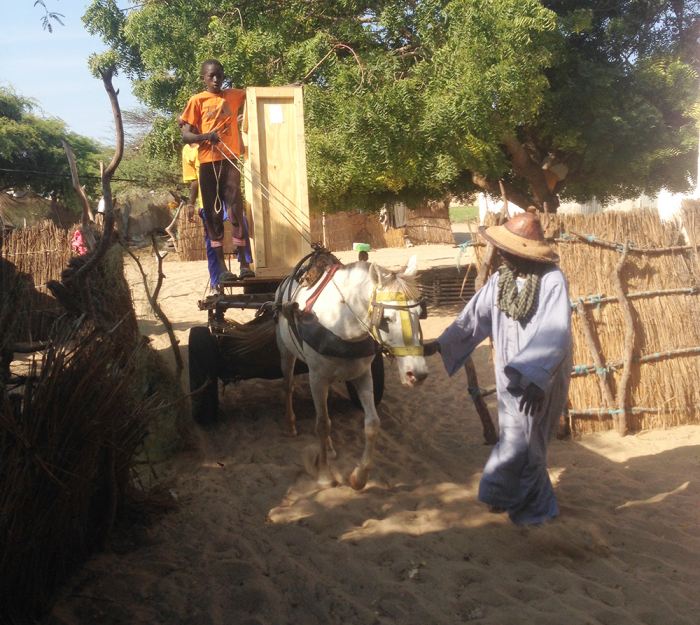
… was taken the last mile via a horse pulled buggy because the roads are too sandy even for trucks to navigate.
Installation of Solar PV Array and Controller
In collaboration with our PV panel supplier, Soleil-Eau-Vie SARL, and the community of Gabar, we installed the 6.8kW array on a fixed tilt (15 degrees). To stay below the upper voltage limits of the controller (750V), we wired up the panels using two parallel strings of 17 panels each (3.4kW). The community provided all of the land required for the installation.

The controller is housed in a concrete building where it will be operated as a micro utility, selling water as a service to local farmers.
Testing the Controller
In December, the SEL team travelled to Senegal to install the control hardware and software in the AC pump controller and get it up and running for the very first time. Testing was done with a 1hp surface pump and a 3hp submersible pump. Under normal sunny conditions both pumps turned on without any issues.
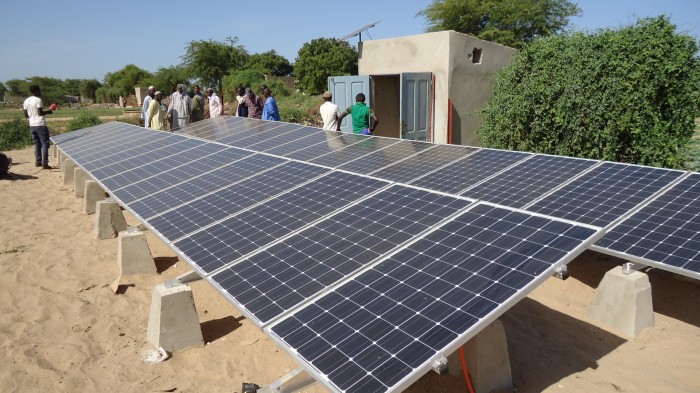
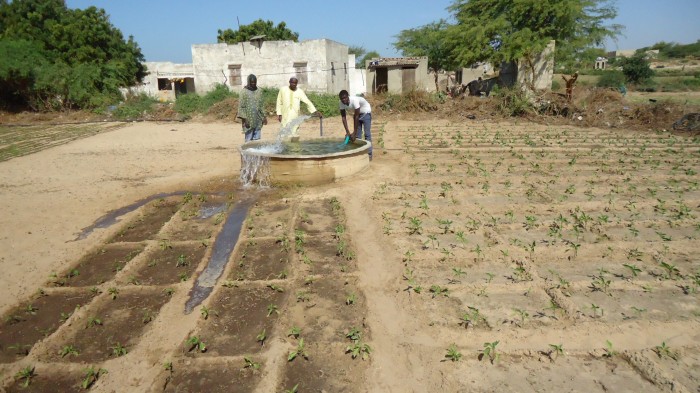
The solar panels and smart controller are up and running. Currently the wires are being laid in trenches between the central controller and each individual farm’s well site.
Challenges
One clear challenge that we will face with automation though is the quick changes in solar conditions. The data below from two consecutive days in mid-December provides a good look at how variable conditions can be. On the 2nd day change occurs gradually and predictably and our control system logic and response time are adequate to turn pumps on and off according to the available power. On the first day however, available power may drop by 50% within a matter of seconds. Our controls cannot react that quickly and turning pumps on and off every few seconds would be bad for the longevity of the VFD and the pumps. And so for days like this, we will need to come up with an alternative solution. Perhaps we will have a setting which allows only one pump to be turned on at a time thereby avoiding the risk of turning on a second pump only to have it shut off 2 seconds later. Or for now, we will rely upon manual controls on cloudy and dusty days, using the automated controls only on clear, sunny days.

Stay tuned for more updates…
